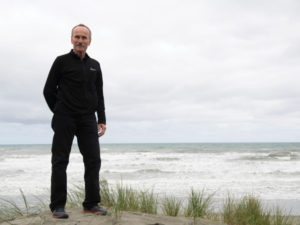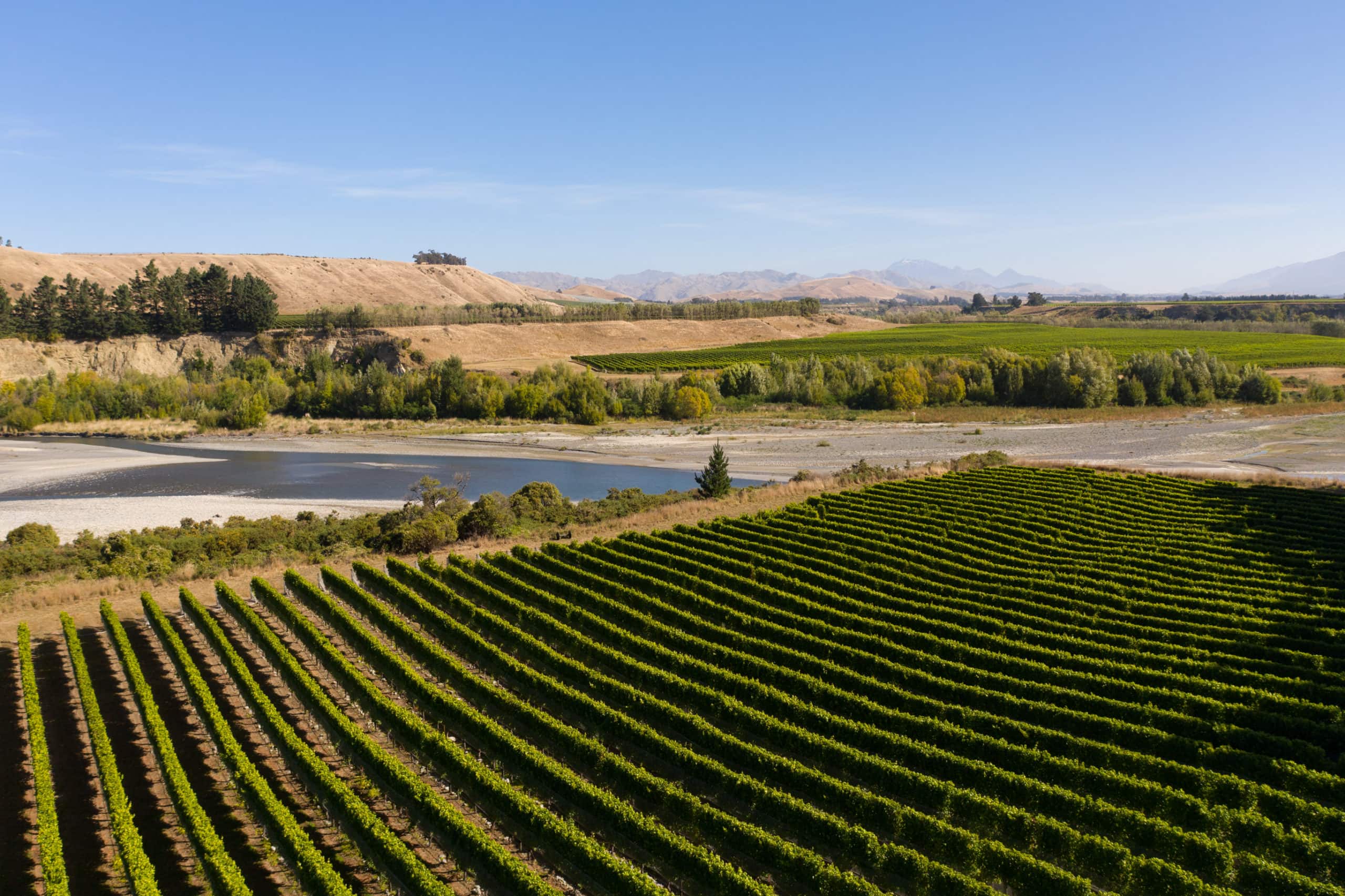Written by Sophie Preece
New Zealand’s wine industry has good irrigation “eco-credentials” with “parsimonious” water use and extremely low-level nitrogen leaching, says Dr Brent Clothier of Plant & Food Research.
 Findings from the Vineyard Ecosystems Programme, gathered from two vineyards in Hawke’s Bay and another two in Marlborough, show water use is “fit for purpose”, and lean enough to conserve the resource and promote the growth of good quality grapes, says Brent, who led the irrigation thread of the study over a five-year period. “Our measurements show that it only takes 9 litres of irrigation water per glass.”
Findings from the Vineyard Ecosystems Programme, gathered from two vineyards in Hawke’s Bay and another two in Marlborough, show water use is “fit for purpose”, and lean enough to conserve the resource and promote the growth of good quality grapes, says Brent, who led the irrigation thread of the study over a five-year period. “Our measurements show that it only takes 9 litres of irrigation water per glass.”
However, there’s room to do even better, Brent says. As climate change raises temperatures and reduces annual rainfall throughout the country, access to more sophisticated technology such as pressure bombs and monitoring of weather and soil water content will help.
“We’re already really smart but there’s an opportunity to be even smarter with how we manage our irrigation to be fit for purpose and produce wine of high quality.”
Brent, who is the current President of The Royal Society-Te Apārangi, has worked with apple and kiwifruit growers in New Zealand, as well as growers of olives in Spain, dates in Abu Dhabi and avocados in Kenya. “It’s our stock in trade to measure how much water plants use,” he says.
When it comes to grapes, growers need enough water to ensure there’s no water stress over flowering, then “tactical” irrigation to maintain berry quality and quantity leading up to harvest, with enough water to keep the plant healthy but not enough to indulge excessive canopy growth, while also keeping in mind the soil storage capacity. The irrigation season is much shorter and more precise than that for pasture, he says. And because no two New Zealand summers are alike, “it’s not that you have the same recipe you can apply year in, year out.”
The Vineyard Ecosystem Programme saw Brent’s team install remote weather stations, subsurface equipment to measure high-frequency changes in soil moisture, flowmeters in irrigation lines, and fluxmeters to measure drainage and nitrate leaching through the root zone, to better understand water and nutrient dynamics in a vineyard ecosystem. “These are intensive and costly to do,” says Brent. His team set up the systems on four “gold sites” of Sauvignon Blanc within the 24 sites of the Vineyard Ecosystems programme, comprised of two contemporary (using herbicide), and two future (no herbicide, one of which was a dry-farmed block).
The team sought to discover the “mass balance in water and the mass balance of nitrogen in the system.” In terms of water, they concluded that across the four gold sites it took about 50 litres of irrigation water to produce 1 kilogram of grapes. That equates to 9 litres of water per glass of wine, which is “a very small number” compared to other water tallies taken around the world, says Brent.
They also found the winter recharge of the aquifer, from rainwater falling past the bare vines and soaking through soil, was on average 85mm more than the summer take, per parcel of land. “That means we put water back and took water out and the net balance to the aquifer was 85mm of positive recharge,” says Brent. “So no water was being destroyed to produce a glass of wine. In fact the aquifer was being recharged.” However, he concedes that it is not yet known how much recharge the aquifer requires to maintain and sustain local ecosystems beyond the vineyard gate. “Is it sufficiently parsimonious? We don’t yet know.”
They also installed technology to measure the quality of water that leaves the root zone and goes back to aquifers “which eventually lead to our rivers”. That found “incredibly low levels of nitrate coming through”, with less than 5kg per hectare per year, as a result of very low concentrations, says Brent. That’s partly because nitrogen is used very conservatively in viticulture, “because it just encourages vegetative vigour”, and because vineyards don’t have the nitrogen input from stock, that pastoral systems have.
“We have found some very useful findings that we can call eco-credentials, which validate the environmental performance of viticulture for both contemporary and future systems in terms of water. I am mightily impressed by the viticulture industry,” says Brent.
The “eco-premium” price companies receive for wine relies on consumers’ perception of the cleanliness of the environment and sustainability practices, he adds. “And the viticulture industry is acutely aware of the need to have demonstrable eco-credentials.”
That understanding is a far cry from the late 1980s/early 1990s, when he was working with the Marlborough District Council on a reassessment of the amount of water required for viticulture in comparison to pasture, through which “consents were reduced by a huge amount”. Viticulturists thought they were losing something, when the amount of water being allocated was much less,” he says, recalling a sense of “robbery” of a natural resource. “We said, ‘you wouldn’t want to use this much water’… You cannot sell more and more grape leaves. You want the quality to be in the berry.”
Watching the viticulture industry “mature” in the intervening years has been “quite amazing really”, he says. “Their relationship with the regulatory agencies in general has been pretty damned good.”
During the period of the study, Hawke’s Bay had its second hottest year and third driest summer since around 1970. “Rainfall across New Zealand is decreasing as a result of climate change and that is widespread. Every region is suffering a loss of rainfall,” Brent says, referencing a 2021 Ministry for Primary Industries’ paper, Water Availability and Security in Aotearoa New Zealand.
So despite its good eco-credentials, the wine industry needs to tap into better technology and knowledge to further refine and fine-tune its irrigation and nutrient management, says Brent. “We are developing the knowledge and tools to make things even better and more sustainable. It’s about continuous improvement.”

















